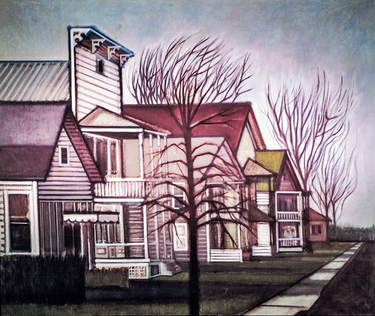Local leaders must act to put housing in reach
Cheryl Domanico raised an important question for the New Scotland Town Board this month.
She wanted to know where the town’s elders who are “unable to keep their houses” would live.
“Does New Scotland have any plans for senior housing?” she asked.
Supervisor Douglas LaGrange replied, “A short answer is: That was the purpose of Stone Creek Estates down the road here.”
But he was quickly cut off by Domanico who pointed out how expensive the specialty housing had become.
“Oh, the half-a-million [dollar] ones,” she said.
LaGrange acknowledged the sale price of some Stone Creek Estate homes in this once rural but rapidly developing town had “gone up close to that, [but] they started out at $300,000,” he said.
That, in a nutshell, is the problem across New York state. High-priced housing is a bane not just for old New Yorkers but for young ones trying to move out of their parents’ basements, for millennials hoping to start families, for the workforce priced out of homes in the places where they work.
We heard it in suburban Guilderland in 2022 when a young volunteer firefighter told the town board that many of his fellow firefighters couldn’t afford apartments in the fire districts they served.
We heard it again in 2023 when Guilderland Town Board members lamented the waiting list of 100 families for federally subsidized housing in town, a list that rarely moves.
This week, the state’s comptroller, Thomas DiNapoli, issued his third and final report on “New Yorkers in Need,” examining housing insecurity across the state, including high cost burdens; inadequate housing conditions; and housing stress that may lead to evictions, foreclosures, and homelessness.
His first two reports were on poverty and food insecurity; in comparison, housing insecurity is more prevalent, the comptroller found.
“In New York, cost burdens are among the most severe in the nation, with one in five households experiencing a severe cost burden, meaning more than 50 percent of income is for housing costs,” says the report. “While low-income renters are the most cost-burdened, these financial pressures are increasingly felt by middle class households.”
When housing is so expensive, residents face tough choices, forcing trade-offs with other essentials like health care and food.
“The consequences of this housing insecurity are wide-ranging, with economic, social, physical and mental health impacts,” says DiNapoli’s report.
In the decade between 2012 and 2022, the report says, New York added 462,000 housing units, an increase of 5.7 percent that was far below other states, with New York ranking 32nd in the nation. In that same decade, monthly household costs grew more rapidly for renters at 39 percent than for homeowners at 28 percent.
Housing insecurity among New York’s elders exceeds the national average with 43 percent of New York households with a person age 75 and older and 37 percent of those with at least one person age 62 to 74 facing housing insecurity, compared to 34 percent and 29 percent, respectively, nationally.
New York’s rate of homelessness, at about 5 per 1,000 people, was highest among all the states and more than double the national rate of about 2 homeless per 1,000 people in January 2023. The number of homeless has increased significantly over time and grew by more than 39 percent in the most recent year alone, the report says, due in part to the influx of asylum seekers in New York City.
But the shortage of affordable housing is not just a New York City problem as many assume.
In the Capital District, from 2016 to 2020, more than a quarter of households — 26 percent — were burdened, the report says.
In that same time period, the Capital District had 443,050 occupied households of which 35 percent were rented. Altogether, 41 percent of those rental households were cost burdened while 18 percent of households that owned their homes were cost-burdened.
The city of Albany is listed as having 41,615 occupied households of which 63 percent are rentals. In Albany, 19 percent of homeowners are cost burdened while 50 percent of renters are.
Minorities suffer disproportionately. In the Capital District, from 2016 to 2020, 24 percent of households headed by a white person suffered from housing insecurity, while 45 percent of households headed by a Black person, 32 percent headed by an Asian, and 42 percent headed by a Hispanic did.
Similarly, in 2023, sixty-four percent of the homeless population in New York state were Black people; 43 percent were female; 28 percent were children under 18; 11 percent were severely mentally ill; and 6 percent suffered from chronic substance abuse.
In the city of Albany and Albany County combined, there were 889 homeless people in 2023, which amounts to 2.8 people per 1,000 population, a 37-percent increase since 2010.
So, yes, the figures are sobering. And, yes, the problem is here locally.
But now that we can clearly see the problem, what can be done to solve it?
DiNapoli’s report outlines a number of state and federal initiatives. Since The Enterprise focuses on local news, and our editorials advocate initiatives our readers can act on, we are returning to the place where we started.
At that same Feb. 14 New Scotland Town Board meeting, as Sean Mulkerrin reports, Councilman Daniel Lienung broached the topic of Governor Kathy Hochul’s Pro-Housing Communities Initiative.
We encourage each of the towns and villages we cover to apply to become a pro-housing community.
On Feb. 7, Hochul addressed representatives from the first 20 municipalities to sign on to the program, part of a package of Executive Actions to increase the housing supply.
“Last year,” Hochul acknowledged to the group, “we didn’t have the big win we hoped for.”
In 2023, Hochul had attempted to follow the lead of Massachusetts and California in requiring suburbs around New York City to allow more housing. The wealthy suburbs on Long Island and in Westchester County strongly resisted the denser housing proposal.
Hochul told the representatives who had signed on as pro-housing communities that she now looks at reaching her goal as scoring in a game. “We’re on first base,” she said.
“It’s a simple matter of supply and demand,” said Hochul; as more homes are built in New York state, prices will go down, she said.
Owning your own home, said Hochul, has always been the American Dream. New Yorkers are leaving to live in states with more affordable housing, some of them nearby, she said.
“We’re losing population … We’re losing political clout,” Hochul said, as, with fewer representatives in Washington, D.C., New York gets fewer federal benefits.
Hochul said she is sticking to her goal of building 100,000 new units of affordable housing in the state.
Referring to her failed efforts in 2023, the governor went on, “I was told people don’t want to be told what to do … They said, ‘No more sticks.’”
With that, Hochul brandished a literal bunch of carrots. As people around the table chuckled, Hochul said, “I’m told this is what you want to eat … I’ve got $600 million carrots out there on the table.”
The various state programs that grant funds for housing have been bundled together. Municipalities who join the pro-housing initiative are eligible to apply to pull from the $650 million pot.
We urge our towns and villages to do so. The application is available on this state website.
The rules are simple. An upstate municipality must either show it has increased housing stock by 0.33 percent in the last year or by 1 percent over the past three years or, if not, it must have its governing board sign a Pro-Housing Resolution and submit documentation on its zoning code, zoning map, and last five years of housing permitting.
The city of Albany is one of those first 20 pro-housing communities. Mayor Kathy Sheehan, during the February roundtable discussion with Hochul, said, “As fast as apartments are built, they are filled … We are all in on this.”
You don’t have to be a city to apply and benefit. One of the original 20, the town of North Elba in the North Country, is a bit smaller than New Scotland, with a population of 8,000. The Mid-Hudson town of Red Hook is similar in size to our Hilltowns with a population of 2,000. And the village of Pulaski in central New York, with a population of about 2,300, is smaller than Voorheesville.
DiNapoli, like Hochul, described having a home as fulfilling the American Dream.
“Having safe and adequate housing is one of the most essential necessities in our society,” DiNapoli wrote at the start of his recent report. “Beyond providing shelter, our homes are places of security and rest, and offer us space for quiet contemplation, shared joys with loved ones and productive enterprises.”
Lately, there are times we feel as if we’ve been living in the American Nightmare. Our society is becoming further polarized with an ever-widening gap between the rich and poor as the middle class falls out of the equation.
Our local leaders can help us wake up from this nightmare by signing on as pro-housing communities. Each of our towns will be richer if our elders can stay here, if our young residents can live and contribute in the place where they were raised, and if future generations can build on the foundation of home ownership.


